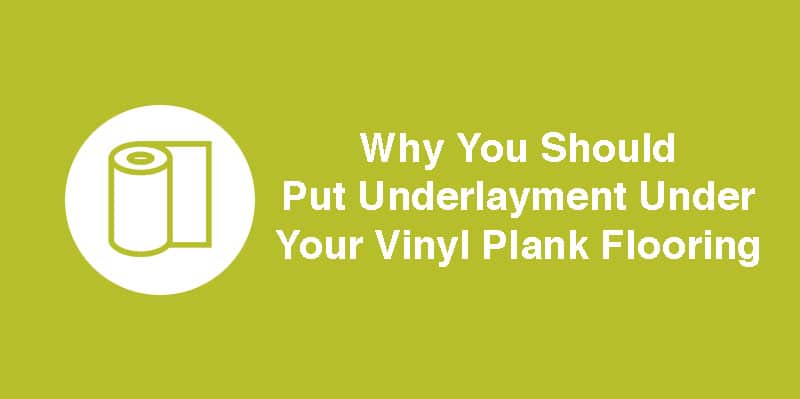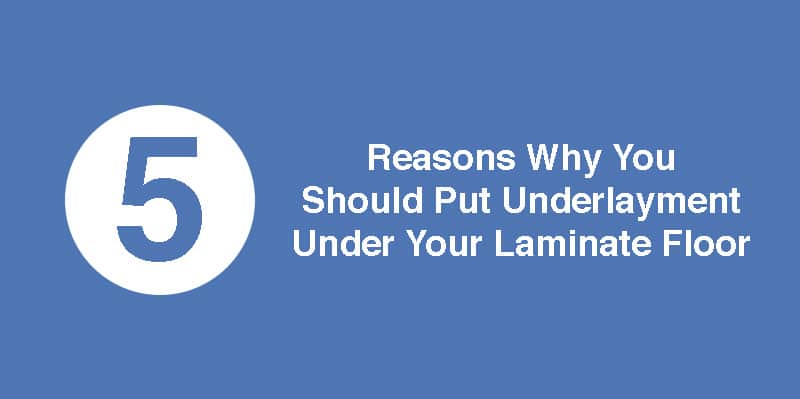Luxury vinyl plank flooring is a great option when replacing your current flooring. It comes in a variety of looks that mimic natural wood and even stone. Most LVP flooring is durable and does a good job defending against scratches, dents, and stains. To get the most out of your LVP you will want to consider what is underneath the flooring. An underlayment provides the proper support to make sure your LVP makes it the long haul.
What is Luxury Vinyl Plank Underlayment?
To understand underlayment, you first need to understand floor structure. Starting from the bottom floors are made up of several parts including the joists, subfloor, underlayment, and the finished flooring material.
Underlayment sits between the subfloor and the finished floor covering. They can be made from a variety of materials like foam, cork, felt, and rubber.
Underlayment for luxury vinyl plank flooring is usually thinner and more dense than underlayment for laminate flooring; this is to provide proper support for the thinner planks.
How Do I Know If I Need Vinyl Plank Underlayment?
The best way to find out if you need underlayment for your new vinyl flooring is to look at the planks you’re planning on installing. If your planks already have a pad-attached underlayment, you most likely won’t need an underlayment. However, if your flooring manufacturers installation instructions allow for an extra underlayment, adding an extra underlayment will provide improved sound reduction, insulation, and moisture protection.
On the other hand, for vinyl planks that don’t have a pad-attached underlayment, adding an underlayment is highly recommended.

What Kind of Vinyl Plank Underlayment Do I Need?
The subfloor and whether it is made of concrete, plywood, or an existing flooring material will determine the kind of underlayment you should use.
Concrete Subfloor
When installing over a concrete subfloor, a felt underlayment is the best choice. Felt does a fantastic job of insulating the flooring from the cold concrete.
It will also provide shock absorption. This will help absorb the impacts of everyday foot traffic, making the flooring more comfortable.
Plywood Subfloor
There is no need for a moisture barrier when installing on plywood. However, you will want to look for an underlayment with sound reduction and feels comfortable.
Existing Flooring
Meaning, installing over existing tile, vinyl plank, or hardwood flooring. We always recommend removing existing flooring before installing vinyl plank flooring.
If you decide to install over existing floors anyways, we recommend adding an underlayment that will cover any potential imperfections from the previous flooring.
Benefits of Vinyl Plank Underlayment
Underlayment brings a variety of benefits to your new vinyl plank floors.
Sound Reduction
Nobody enjoys hearing each and every step in their home. A good underlayment can lessen impact noise from shifting furniture, dropped objects, and footfalls. A TV in the room above you is one source of airborne noise that can be reduced using underlayment. Overall, it contributes to a quieter, more tranquil home. Consider reading this article to learn more about underlayment sound ratings.
Moisture Protection
Some underlayment’s have a built-in moisture barrier which will protect your new laminate floors from moisture. For below-grade installations on a concrete subfloor, a vapor barrier is a necessity. Concrete subfloors are porous, which means the concrete subfloor will emit moisture over time. If unprotected, moisture can build up underneath your laminate flooring and cause warping of the planks.
Protection from Subfloor Imperfections
Creaky floors get old very fast. When you have a bump or dip in your subfloor, the uneven surface can cause vinyl planks click-lock-systems to become uneven. This will cause creaking or “popping” every time you walk over the floor. An underlayment can help fill in subfloor imperfections and leave your flooring a smooth surface to lay on.
Insulation for flooring
Felt underlayment’s do an exceptional job at insulating your flooring from the subfloor. This will keep your flooring warmer during the colder months of the year and result in you being more comfortable in your own home.
How Do I Install Vinyl Plank Underlayment?
For installation of click-together vinyl planks, including those with attached cushions, ensure the subfloor is clean and dry. Roll out the underlayment and flip it over so the film side is up and the felt side down to the subfloor. Seams need to be butted together flush. Do not overlap the pad. Remove the tape strip and secure the overlapping moisture barrier film. Seal seams with duct tape or quality strapping tape when cutting around obstacles or when the end of roll seams are butted together.
Plan ahead to ensure the underlayment seams run perpendicular to the long dimension of the planks. This will help eliminate any voids under the joints. There must be a minimum four-inch separation between seams of underlayment, and seams of finished flooring products. Install flooring according to the flooring manufacturer’s installation instructions.
Where Can I Buy Vinyl Plank Underlayment?
Here at MP Global Products, we’ve been creating recycled fiber underlayments for over 25 years. We have underlayment’s specifically designed for almost every type of flooring installation. Our two most popular underlayments for vinyl plank flooring are QuietWalk Luxury Vinyl and QuietBoard.
If you have any questions about your flooring installation, please feel free to call us at (888) 379-9695.
Join Our Newsletter
You are about to install your new flooring. As you lay the first plank you realize that




